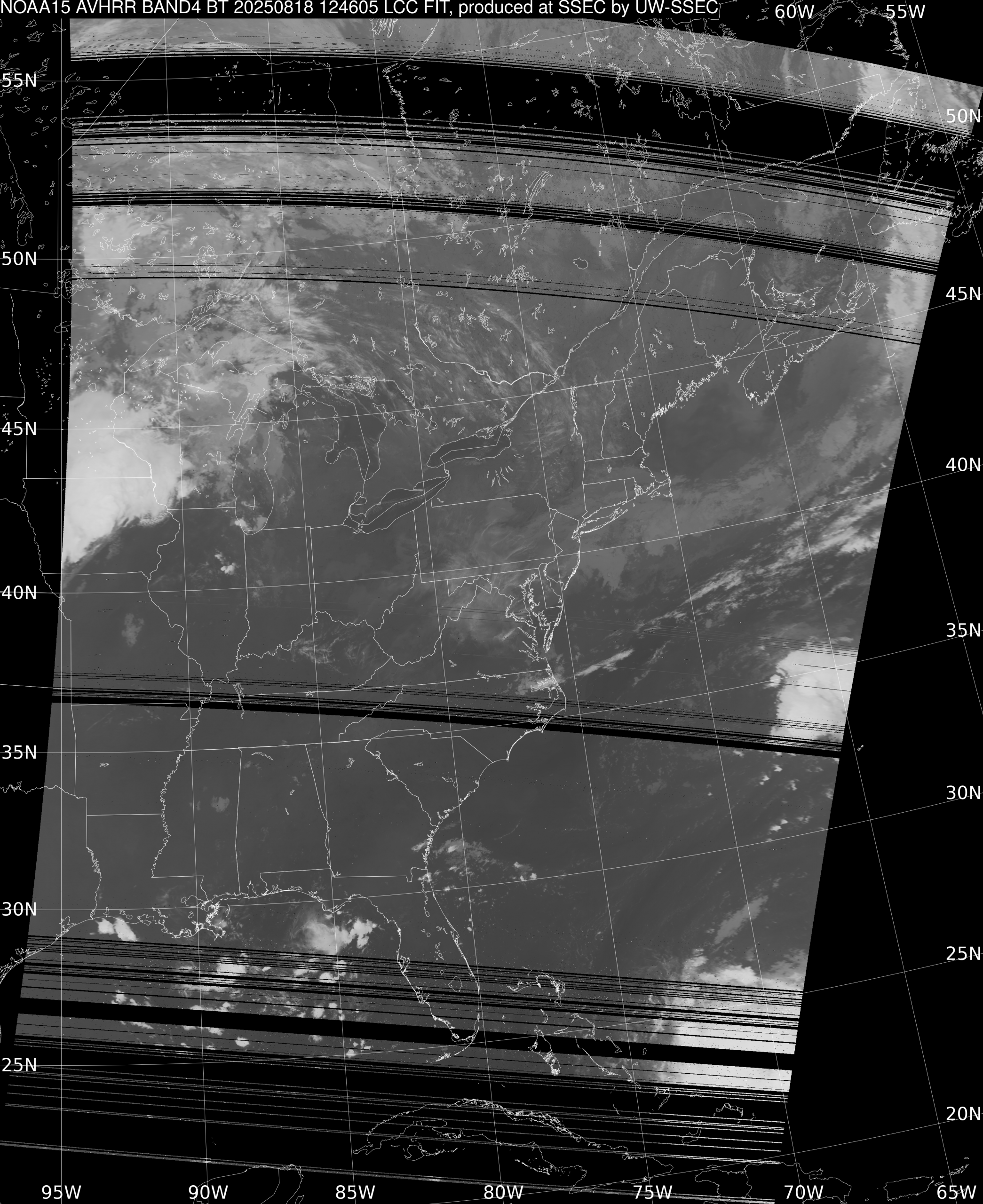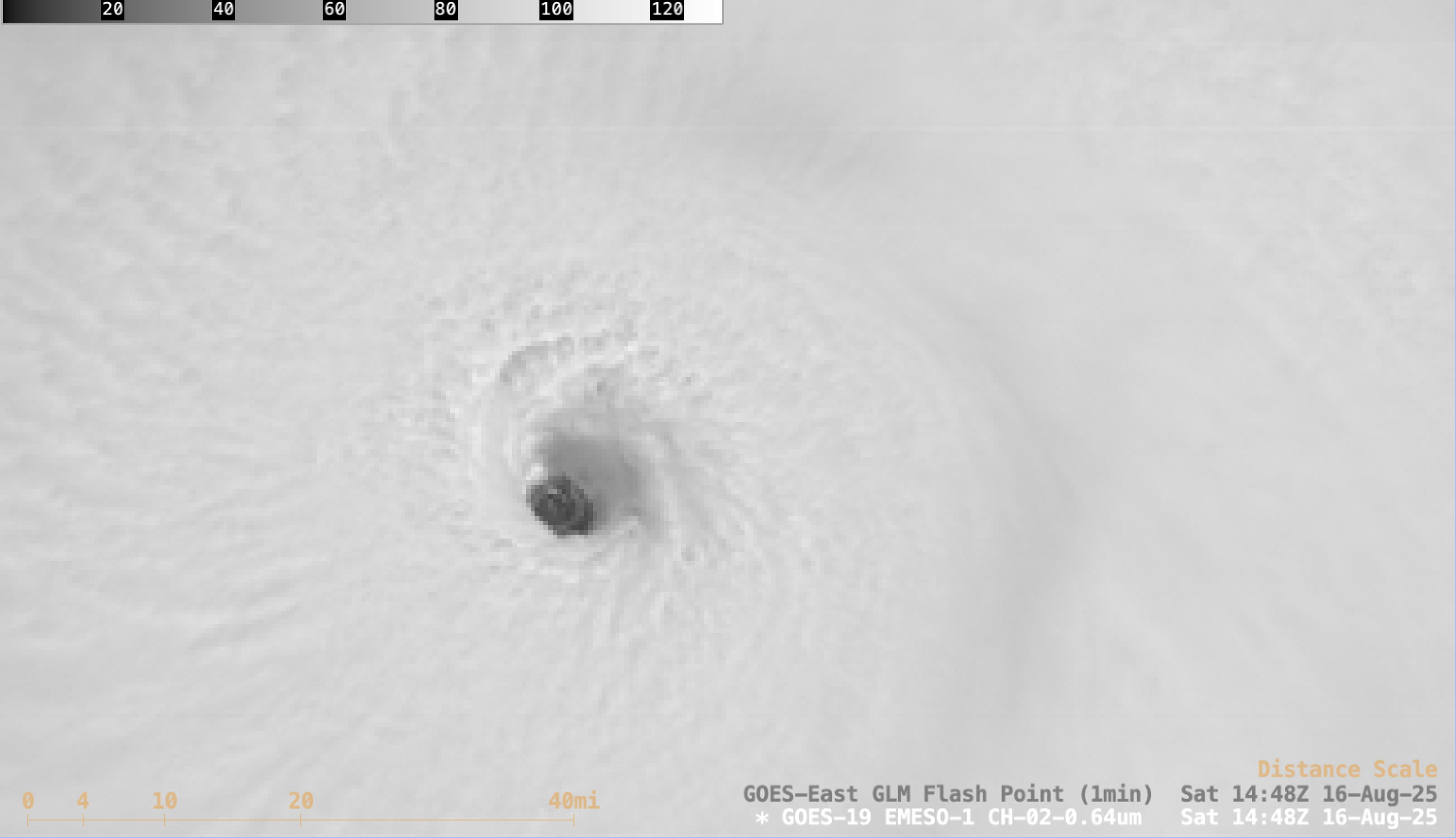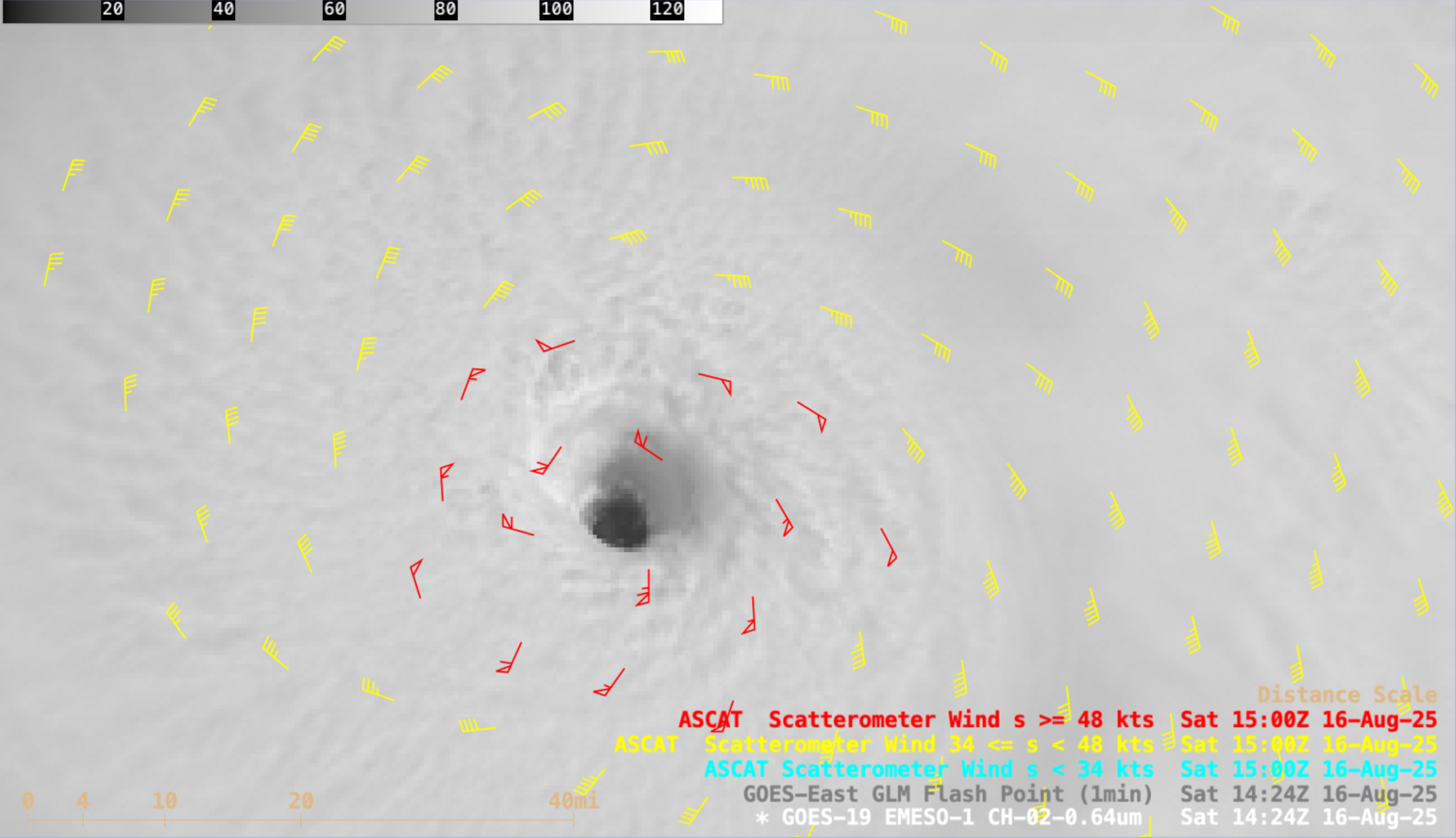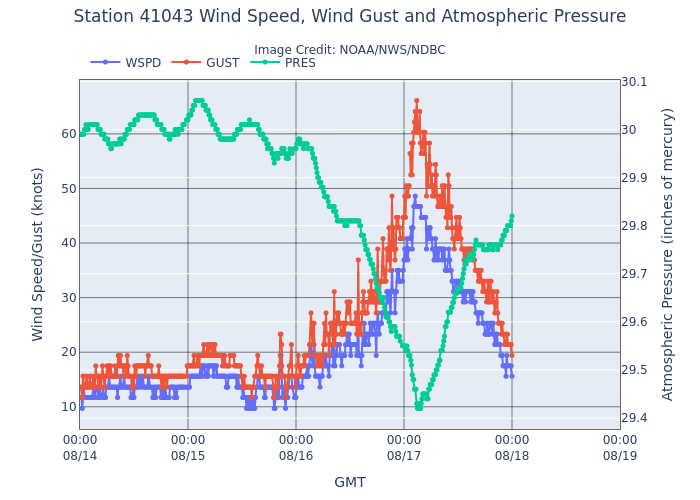
1-minute GOES-18 Clean Infrared Window (10.3 µm) images combined with the Fire Mask derived product (cluster of semi-transparent red pixels), from 1757-2235 UTC on 22 August [click to play MP4 animation]
1-minute Mesoscale Domain Sector GOES-18 (GOES-West) Clean Infrared Window (10.3 µm) images combined with the FDCA Fire Mask derived product (above) showed that the Dollar Lake Fire in western Wyoming produced a pyrocumulonimbus (pyroCb) cloud as it was experiencing very active fire behavior (growing in size from 1300 to 5000 acres) in the wake of a cold frontal passage on 22 August 2025. The pyroCb cloud first exhibited a cloud-top 10.3 µm infrared brightness temperature (IRBT) of -40ºC (denoted by darker blue pixels) — a necessary condition to be classified as a pyroCb — at 1908 UTC.
A non-pyroCb meteorological thunderstorm also developed just north of the Dollar Lake Fire pyroCb. While no GLM-detected lightning activity was seen with the pyroCb, several GLM Flash Points were associated with the northern thunderstorm (however, since the Flash Points are parallax-corrected, their surface locations appeared south-southwest of the parent thunderstorm).

GOES-18 Infrared image at 2222 UTC on 22 August, with a cursor sample of the coldest pyroCb cloud-top infrared brightness temperature [click to enlarge]
The coldest pyroCb cloud-top IRBT was -53.49ºC at 2222 UTC, about 300 mi downwind (east) of the Dollar Lake Fire, as the leading edge of the pyroCb approached the Wyoming/South Dakota border (above). On a plot of rawinsonde data from Riverton, Wyoming (below) the air temperature of -53.49ºC occurred just above the Most Unstable (MU) air parcel’s Maximum Parcel Level (EL) of ~10.2 km.
The Dollar Lake Fire burned very hot, exhibiting a 3.9 µm infrared brightness temperature of 137.88ºC — which is the saturation temperature of the GOES-18 ABI Band 7 detectors — for about 3 hours, beginning at 1823 UTC (below).

GOES-18 Shortwave Infrared (3.9 µm) image at 1823 UTC on 22 August, with a cursor sample of the hottest 3.9 µm brightness temperature over the Dollar Lake Fire [click to enlarge]
View only this post Read Less






















